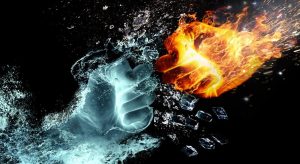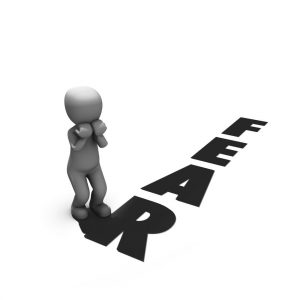
Dr. Stephen Porges’s work in polyvagal theory led to a deeper understanding of the autonomic nervous system and particularly the vagus nerve. I refer to it as the “dance of the vagus nerve” with rhythms of feeling safe, love, compassion and fear, which I will discuss later in the post. Porges’s polyvagal theory is a game changer in the biology of autonomic nervous system. For those of you interested in a more detailed discussion of polyvagal theory, I added a link to Dana Lewis’s (2018) discussion. The traditional view of the autonomic nervous system included: sympathetic nervous system which generated body’s fight or flight responses when person faced danger versus the parasympathetic nervous system, which led to resting and calming of the nervous system.
Polyvagal theory suggests a more nuanced and complicated autonomic nervous system. Polyvagal theory suggests that the parasympathetic nervous system is enervated by the vagus nerve (also known as “wanderer”) as the nerve truly seems nomadic popping up in different part of the body). The vagus nerve is the tenth cranial nerve which joins the brain, heart, lungs, digestive system and organs associated with digestive processes. The vagus nerve carries information back and forth between the brain and other body organs. So the vagal nerve is the connector between the brain and gut, a pathway of mind-body connection and integrative health. The vagus nerve is involved in mood states, immune responses, stress response, heart, lung and digestive systems (e.g. linking inflammation of the body systems to exposure to ongoing high stress levels). When I read about the rhythm of the vagus nerve in regulating the nervous system, the image of the “dancing vagus nerve” came to mind. Growing up in India in the first ten years of my life, I saw many ethereal and elegant dance forms. Some of the dance forms are considered temple dances or dances of worshiping the Divine. I have no formal training in any dance forms, but I have family members who are very talented dancers. As an audience member, watching some of these dances is mesmerizing as one observes the dancer’s complex hands, legs movements, facial gestures and body postures transform flawlessly in alignment with rhythm of the tabla (Indian drum) and melody of the songs. My image of the dancing vagus nerve reminded me of the Hindu statue, Nataraj (statue of Lord Shiva in a Dance Form, symbolic of the Divine Consciousness as a Cosmic Dancer dancing in Bliss). In Hinduism, the Blissful Dancing Lord Shiva creates the cosmic rhythm of creation, sustenance and destruction. Why blissful? Because Lord Shiva represents Divine Consciousness which is beyond the duality of human existence. Duality in the human realm represents happiness versus suffering, regulation versus dysregulation of the nervous system, passion versus dispassionate, birth versus death.
Unlike Divine Consciousness, most of us human beings dance with the vagus nerve and autonomic nervous system, with movement across states of regulation and dysregulation in the pandemic. Regulated states leans towards feeling peaceful, calm and content. Slightly dysregulated states may mean having a “bad day”. Highly distressful states of dysregulation are based on experiencing dangerous situations, as discussed below. This post reviews the basic autonomic nervous system, polyvagal theory and suggests healthy strategies of regulation of the nervous system . Each individual’s regulation and dysregulation patterns of the nervous system is very much mediated by his or her risk and resiliency or protective factors. Each person has triggers which led to states of vulnerability and protective factors which regulates the nervous system.
OVERVIEW OF AUTONOMIC NERVOUS SYSTEM
Autonomic Nervous System (adapted from Dr. Porges’ training at PESI).
Sympathetic Nervous System Parasympathetic Nervous System (VAGUS NERVE)
“Fight or Flight”” (Life threatening) Ventral Vagal Complex versus Dorsal Vagal Complex

Fight Response

Flight Response

Safety, Peace, Love and Compassion and Social Engagement System

Dorsal Ventral Complex
Freeze Response
Before we dive into the world of the dancing vagus nerve and autonomic nervous system, I am going to introduce the concept of neuroception and basic parts of the autonomic nervous system. Neuroception is the subconscious process that neural circuits in the brain use to detect any possible danger. The brain circuits survey both internal body states (what we are experiencing inside our bodies) versus external states (events in the world around us) . Brain circuits monitor what is safe and unsafe. For the sake of survival, we move towards safety and stay away from unsafe situations. Feeling safe is a key ingredient for activities, such as learning in school, social interactions and basic sleep.
According to polyvagal theory, the three parts of the autonomic nervous system are: Ventral Vagal Complex (VVC), Sympathetic Nervous System (SNS) and Dorsal Vagal Complex (DVC). The VVC is associated with feelings of calmness, peace, love and compassion when a person feels safe. VVC associated with our social engagement system where we connect with others through interpersonal relationships. The SNS is activated when the person experiences life threatening situations and the body gets ready for fight or flight responses (mobilization responses) for survival. The DVC state is triggered when the person senses danger and becomes immobilized ( freeze response). The three systems co-mingle, such as, activation of VVC and SNS leads to movement with feelings of safety (dancing, playing sports, writing) which can be very positive experiences.
HEALTHY PRACTICES TO FACILITATE VENTRAL VAGAL COMPLEX (FEELINGS OF SAFETY, CALMNESS, LOVE AND COMPASSION)
Given the stressful nature of the pandemic, many folks may be in other states, besides the VVC state. The central question is how do we develop and implement strategies to enter the VVC states. The field of mind body medicine provides some very helpful and fascinating strategies of how to facilitate VVC states:
1. Meditation and mindfulness practices with breathing techniques, focused attention on something Loving (secular or faith based) has a calming effect on the mind and body after stressful experiences. Calming effects most likely leads to feelings of safety. Please see Love on the Brain practices post Being a faith based person, I love this wonderful article, “5 Pictures of God’s Love to Encourage you this Valentine’s day”, by Lisa Samra. Samra writes that despite one’s relationship status in the realm of human beings, she experiences great joy, especially in Valentine’s Day, in her knowledge that she is deeply loved and known by God. She describes five images of God’s great, deep and fierce love for His Children (great VVC triggering images) in the Biblical scriptures. The images she writes about God’s love are very powerful : God as “Safe Shelter”, “Eternal Spring”, “Faithful Spouse”, “Caring Mother” and “Overwhelming Flood”. I love her description that unlike some people who are hesitant or reluctant in their love of us, God’s Love is “beyond dimensions”, “surpasses human understanding” and “floods the soul”. Unlike certain people ‘s restricted love, God’s Unconditional or Agape love is Boundless. I totally agree with Samra on this point.
2. The practice of yoga is powerful in facilitating VVC states. Marlysa B. Sullivan and her colleagues (2018) discussed that any body awareness practices with the mindfulness qualities of nonjudgment, loving-kind attention, and acceptance lead to a calming effect on mind and body. Sullivan and her colleagues discuss the similarities between polyvagal theory and ancient yoga practices. They discuss possible pathways as to why yoga is so effective in calming states of dysregulation or stress in the mind and body. They discuss the ancient wisdom regarding yoga practices. In ancient views of yoga, there is a distinction between “Purusha” which refers to spirit, “the indweller”, and observer of experiences and “Prakiti”, material world where experiences arises. Sullivan and her colleagues discuss that in the ancient text, The Bhagavad Gita, prakiti is composed of three qualities or “gunas”: 1. “sattva” (“lightness, clarity, harmony”, lucidity, joy, and necessary for cultivating wisdom and “clear seeing”), 2.”rajas” (capacity for mobilization, but predominance of rajas is associated with pain, anger, agitation and greed) and 3. “tamas” (capacity of restrain or limit, but, heavy tamas is linked with delusion, dullness, ignorance and negligence). Intermingling of different gunas led to different states in material world. Sullivan and her colleagues also draw possible parallel between polyvagal theory and the three gunas. They link Ventral Vagal Complex (VVC), associated with feelings of safety, calmness, love and compassion with sattva guna, activation of Sympathetic Nervous System (SNS) states (fight or flight responses) with ragas guna and activation of Dorsal Ventral Complex (DVC) associated with freeze response, with tamas gunas. I find this view intriguing and fascinating. Sullivan and her colleagues (2018) suggest that the basic practice of yoga is to observe (through Purusha or spirit) the changing states of the gunas in the prakiti (material mind and body) without entanglement. This leads to the eventual realization that “I am not my thoughts, pain, anxiety, depression or whatever else that is happening in my mind and body”. There is a change in the relationship between the person and stressful experiences in mind and body. The researchers argue that yoga practices are associated with positive feeling states. According to the researchers, this grounding of self in spirit is basis of the yogic mind, which is not influenced by the changes in emotions, thoughts or body states. Yogic mind in some sense has transcended the duality of the human experience, unmoved by changes in the body, mind or world around. This is a difficult state to achieve. (By the way, I am nowhere near). However, yoga therapy has been linked with better treatment outcomes of mental and physical health issues.
2. Connecting with “ventral vagal superstars” (supportive people with whom you have peaceful, loving and warm interactions in your life) is a healing strategy. These are the relationships which ground us, where we feel listened to and loved. I also agree with Dr. Porges discussion that healthy relationships between two people can have ruptures and the capacity of repairing the ruptures leads to deeper connections. Healthy boundaries with ” anti-VVC people” (difficult people) may be something to think about. I love Eckhart Tolle’s statements about being present and not triggered into unconscious states when interacting with unconscious people. I interpreted Tolle’s unconscious people as people driven by SNS or DVC states where they are driven by raw emotion and reactive. Interacting with such people makes us also very reactive. I also recognize that during certain situations in my life, I am been a difficult person for others. My family will attest to this. Hence, my desire to learn more strategies to enter VVC states.
3. Movements which are soothing: dancing, writing, walking, swimming, chanting, prayer rituals (e.g. beads and rosary), mantras practice for the day, such as, (“Be Kind” or “”This too shall pass”,) for the day can be helpful. Engaging in experiences of “flow” can be very powerful experiences where people feel so immersed in the activity that they transcend a sense of time.
4. Activities which promote joy or positive emotion, as discussed in the positive psychology in the pandemic post, may be powerful in accessing VVC states. Gratitude practices, present focused activities, beautiful music, random acts of kindness towards self and others, use of humor, walks in nature, radical acceptance of reality and make the best of the situation mindsets can be powerful mood boosters.
5. Monitor your own states of vulnerability such as days of not enough sleep, or high stress at work. Those are the days to practice strategies for VVC activation. Awareness of red flags of your SNS and DVC states help us learn when to use more calming strategies. Awareness of loved ones in DVC or SNS states can help navigate our relationships.
6. Practicing radical acceptance strategies of nonjudgment that the nervous system may dance into states of dysregulation in a pandemic at times and we need to develop wise and healthy strategies to dance back into regulation states of feeling safe and calm.
7. Awareness of unhealthy regulation practices of nervous system (e.g. digital addiction, use of substances) that are hurtful to you and others and seek professional help.
CLOSING THOUGHTS
The pandemic may mean many people having days where states of the nervous system are anything, but VVC based. Strategies for VVC activation are likely to lead to feelings of safety, love, compassion, kindness and peace for self and others. These are just some strategies for VVC activation in this blog. Please use the strategies for feelings of calmness and safety, discussed in the post, if they are helpful. If the strategies are not helpful, please do not use them. Readers might have other healthy strategies for VVC activation which work for them. I welcome readers to share their VVC activation strategies.
.